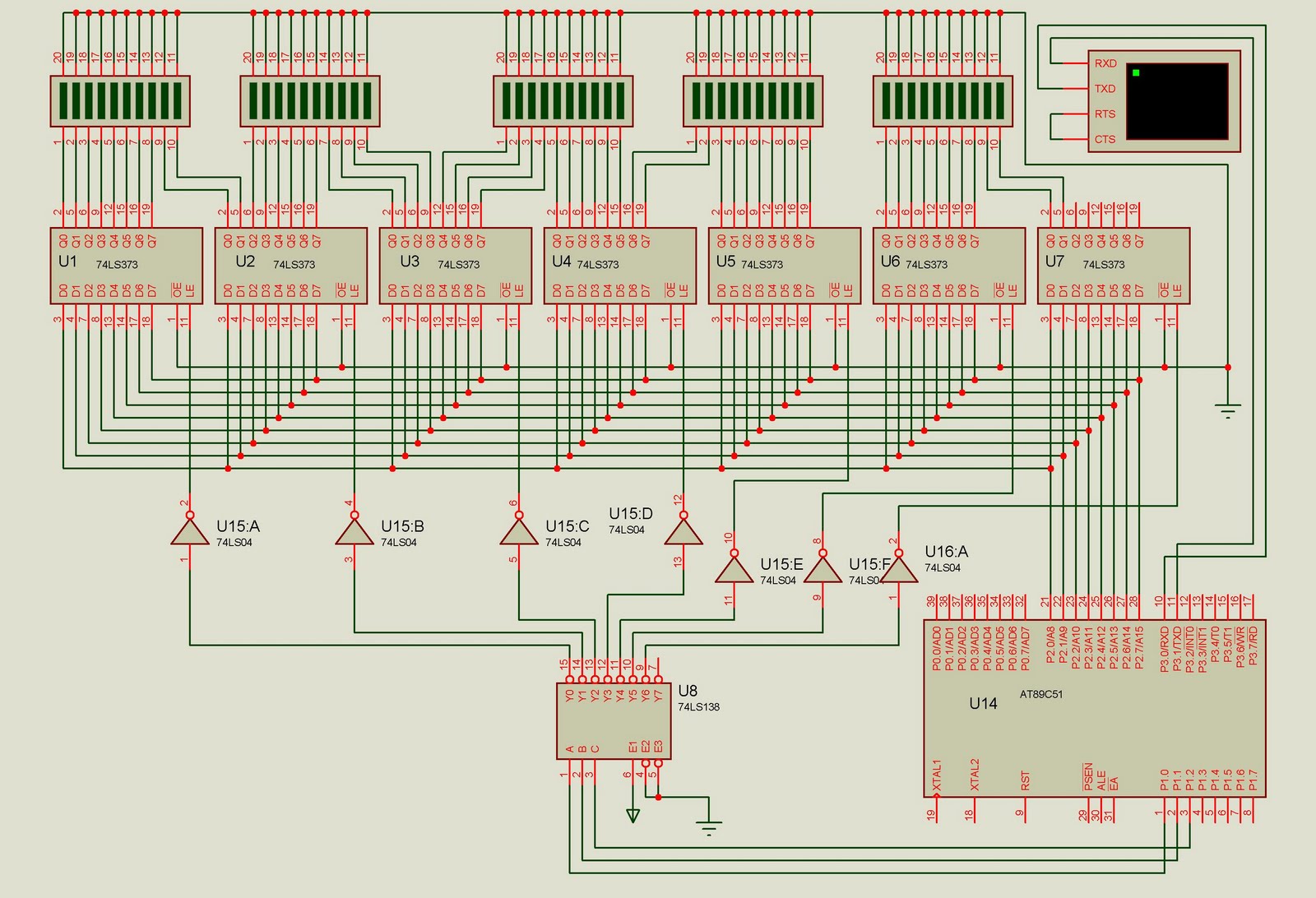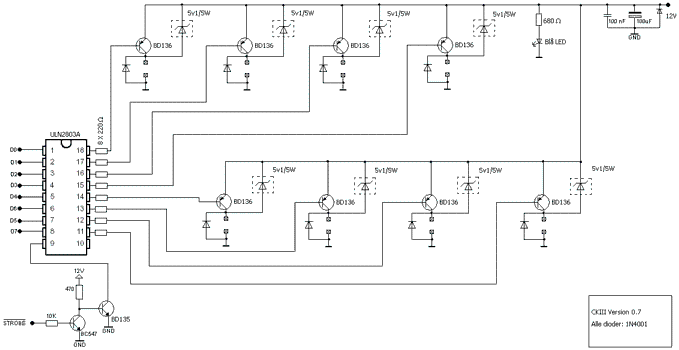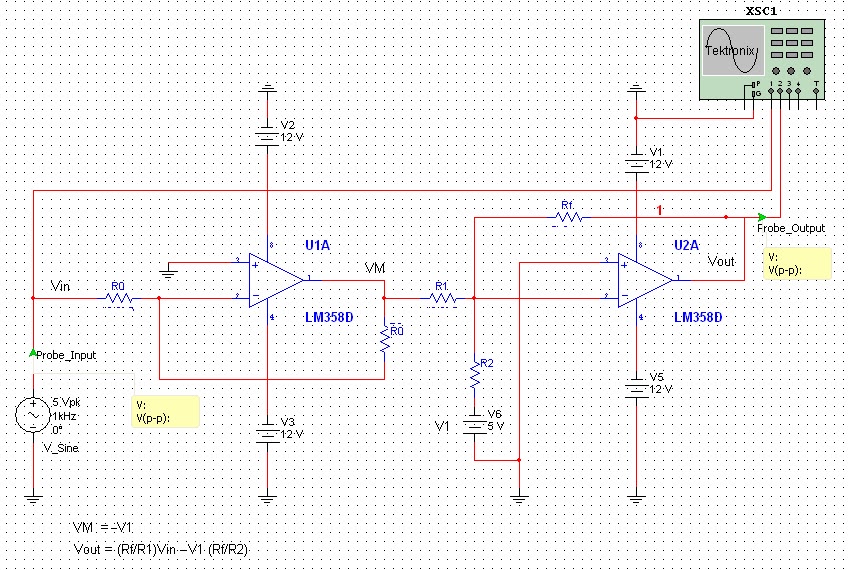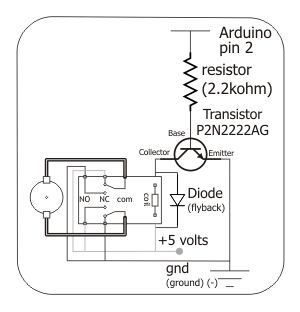
control solid state relays up to 50

This project is designed to control up to 50 solid-state relays independently. It serves as an excellent learning resource for students who wish to expand the input-output lines of a microcontroller and control multiple devices. The ON or OFF status of each external hardware device is indicated by an LED, which will be replaced with an optical isolator to interface with the relays or other high-load devices. The notation used for commands is "n" or "N," where "n" or "N" represents "ON," and the blank spaces are filled with numbers ranging from 01 to 50. For example, to turn on LED number 5, the command would be n05 or N05. The project also includes a circuit diagram for interfacing the 8051 microcontroller with relay coils, a relay switch for Atmel microcontrollers, a scrolling dot matrix LED display using the 8051, a circuit diagram for a line tracer using the 8051 microcontroller, and a schematic diagram for an SMS relay control board using GSM technology and the 16F877 microcontroller with 10 solenoid valves. Additionally, it covers how to use the MOC3010.
The project centers around a microcontroller-based control system capable of managing multiple solid-state relays (SSRs). Each relay can be activated or deactivated independently, allowing for versatile control of various devices, making it suitable for educational purposes in electronics and embedded systems. The use of solid-state relays provides advantages such as faster switching times and increased durability compared to mechanical relays.
The system utilizes an LED indicator for each relay to display its status, which can be replaced with optical isolators for better isolation and protection of the microcontroller from high-voltage circuits. The command system implemented allows for straightforward control, where each relay is accessed by a specific command, enhancing the ease of use and programming flexibility.
The project includes detailed schematics for interfacing the 8051 microcontroller with the solid-state relays, ensuring proper operation and control. The 8051 architecture is leveraged for its robust capabilities, including sufficient input-output lines to manage multiple relays. The integration of additional components, such as a scrolling dot matrix LED display, allows for real-time status updates and visual feedback for the user.
Moreover, the project explores the use of GSM technology for remote control applications, showcasing a modern approach to automation. The inclusion of solenoid valves illustrates the control of various types of loads, expanding the practical applications of the project. The MOC3010 optoisolator is also highlighted for its role in safely interfacing the microcontroller with high-voltage components, ensuring the integrity of the microcontroller while managing external devices.
Overall, this project provides a comprehensive platform for learning and experimentation in microcontroller applications, relay control, and interfacing techniques, making it a valuable resource for students and hobbyists in the field of electronics.This project is developed to control up to 50 solid state relays individually. The project is good learning material for students who which to expand the input output lines of microcontroller and want to control many devices. 2. The ON or OFF status of each external hardware device is currently shown with the help of LED, which will be replace wit
h optical isolator to interface the relays or other high load device. n_ _ or N_ _ i. e. here n or N stands for "ON" and at blank spaces put the number 01 to 50. so we can say that to turn on the led number 5, command will be n05 or N05. circuit diagram of 8051 interfacing with relay coils, relay switch atmel microcontroller, scrolling dot matrix led display using 8051, circuit diagram for line tracer using micro controller 8051, microcontroler comanda motor cc. schematic diagram sms relay control board usig gsm technology and microcontrolle 16f877 10 valvulas solenoides how to use moc3010
🔗 External reference
The project centers around a microcontroller-based control system capable of managing multiple solid-state relays (SSRs). Each relay can be activated or deactivated independently, allowing for versatile control of various devices, making it suitable for educational purposes in electronics and embedded systems. The use of solid-state relays provides advantages such as faster switching times and increased durability compared to mechanical relays.
The system utilizes an LED indicator for each relay to display its status, which can be replaced with optical isolators for better isolation and protection of the microcontroller from high-voltage circuits. The command system implemented allows for straightforward control, where each relay is accessed by a specific command, enhancing the ease of use and programming flexibility.
The project includes detailed schematics for interfacing the 8051 microcontroller with the solid-state relays, ensuring proper operation and control. The 8051 architecture is leveraged for its robust capabilities, including sufficient input-output lines to manage multiple relays. The integration of additional components, such as a scrolling dot matrix LED display, allows for real-time status updates and visual feedback for the user.
Moreover, the project explores the use of GSM technology for remote control applications, showcasing a modern approach to automation. The inclusion of solenoid valves illustrates the control of various types of loads, expanding the practical applications of the project. The MOC3010 optoisolator is also highlighted for its role in safely interfacing the microcontroller with high-voltage components, ensuring the integrity of the microcontroller while managing external devices.
Overall, this project provides a comprehensive platform for learning and experimentation in microcontroller applications, relay control, and interfacing techniques, making it a valuable resource for students and hobbyists in the field of electronics.This project is developed to control up to 50 solid state relays individually. The project is good learning material for students who which to expand the input output lines of microcontroller and want to control many devices. 2. The ON or OFF status of each external hardware device is currently shown with the help of LED, which will be replace wit
h optical isolator to interface the relays or other high load device. n_ _ or N_ _ i. e. here n or N stands for "ON" and at blank spaces put the number 01 to 50. so we can say that to turn on the led number 5, command will be n05 or N05. circuit diagram of 8051 interfacing with relay coils, relay switch atmel microcontroller, scrolling dot matrix led display using 8051, circuit diagram for line tracer using micro controller 8051, microcontroler comanda motor cc. schematic diagram sms relay control board usig gsm technology and microcontrolle 16f877 10 valvulas solenoides how to use moc3010
🔗 External reference





